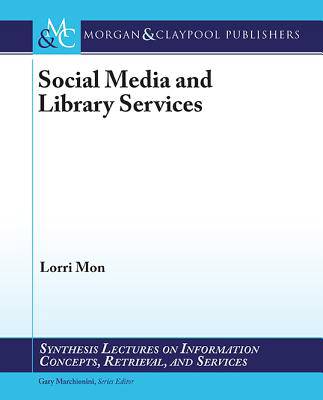
- Afhalen na 1 uur in een winkel met voorraad
- Gratis thuislevering in België vanaf € 30
- Ruim aanbod met 7 miljoen producten
- Afhalen na 1 uur in een winkel met voorraad
- Gratis thuislevering in België vanaf € 30
- Ruim aanbod met 7 miljoen producten
Zoeken
Omschrijving
The rise of social media technologies has created new ways to seek and share information for millions of users worldwide, but also has presented new challenges for libraries in meeting users where they are within social spaces. From social networking sites such as Facebook and Google+, and microblogging platforms such as Twitter and Tumblr to the image and video sites of YouTube, Flickr, Instagram, and to geotagging sites such as Foursquare, libraries have responded by establishing footholds within a variety of social media platforms and seeking new ways of engaging with online users in social spaces. Libraries are also responding to new social review sites such as Yelp and Tripadvisor, awareness sites including StumbleUpon, Pinterest, Goodreads, and Reddit, and social question-and-answer (Q&A) sites such as Yahoo! Answers-sites which engage social media users in functions similar to traditional library content curation, readers' advisory, information and referral, and reference services. Establishing a social media presence extends the library's physical manifestation into virtual space and increases the library's visibility, reach, and impact. However, beyond simply establishing a social presence for the library, a greater challenge is building effective and engaging social media sites that successfully adapt a library's visibility, voice, and presence to the unique contexts, audiences, and cultures within diverse social media sites. This lecture examines the research and theory on social media and libraries, providing an overview of what is known and what is not yet known about libraries and social media. Chapter 1 focuses on the social media environments within which libraries are establishing a presence, including how social media sites differ from each other, yet work together within a social ecosphere. Chapter 2 examines how libraries are engaging with users across a variety of social media platforms and the extent to which libraries are involved in using these different social media platforms, as well as the activities of libraries in presenting a social "self," sharing information, and interacting with users via social media. Chapter 3 explores metrics and measures for assessing the impact of the library's activity in social media sites. The book concludes with Chapter 4 on evolving directions for libraries and social media, including potential implications of new and emerging technologies for libraries in social spaces.
Specificaties
Betrokkenen
- Auteur(s):
- Uitgeverij:
Inhoud
- Aantal bladzijden:
- 87
- Taal:
- Engels
- Reeks:
Eigenschappen
- Productcode (EAN):
- 9781627054386
- Verschijningsdatum:
- 1/03/2015
- Uitvoering:
- Paperback
- Formaat:
- Trade paperback (VS)
- Afmetingen:
- 190 mm x 235 mm
- Gewicht:
- 167 g

Alleen bij Standaard Boekhandel
+ 71 punten op je klantenkaart van Standaard Boekhandel
Beoordelingen
We publiceren alleen reviews die voldoen aan de voorwaarden voor reviews. Bekijk onze voorwaarden voor reviews.











